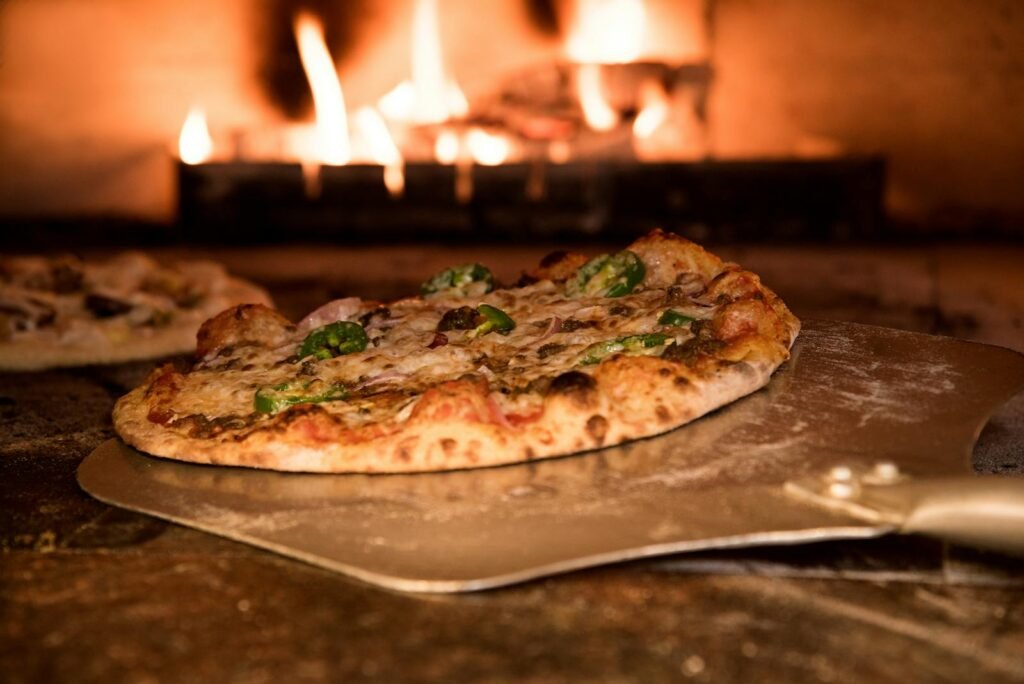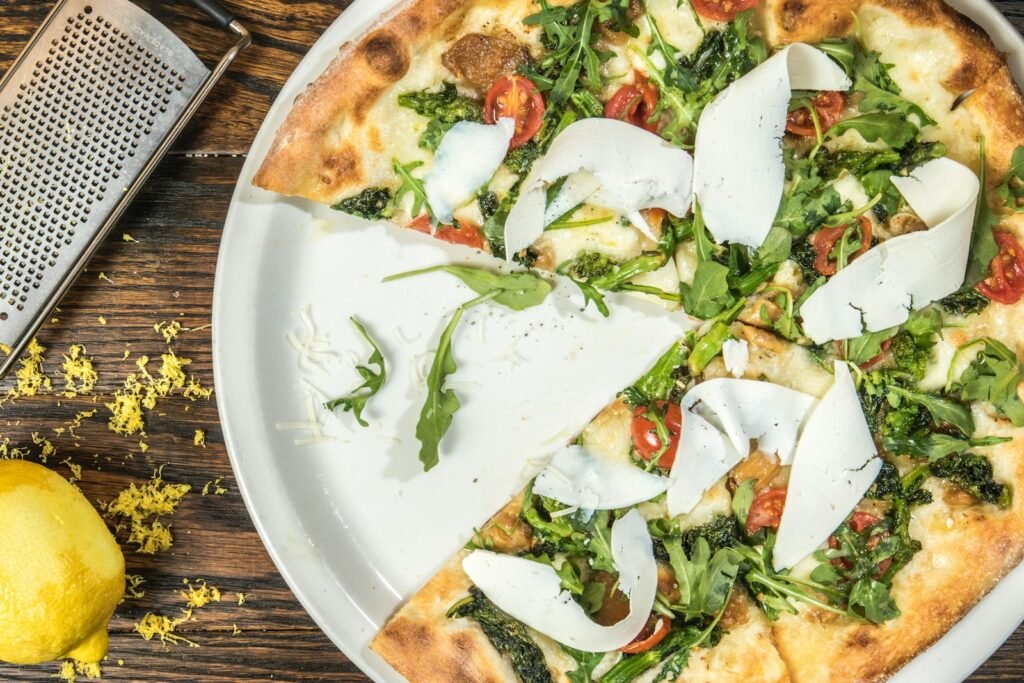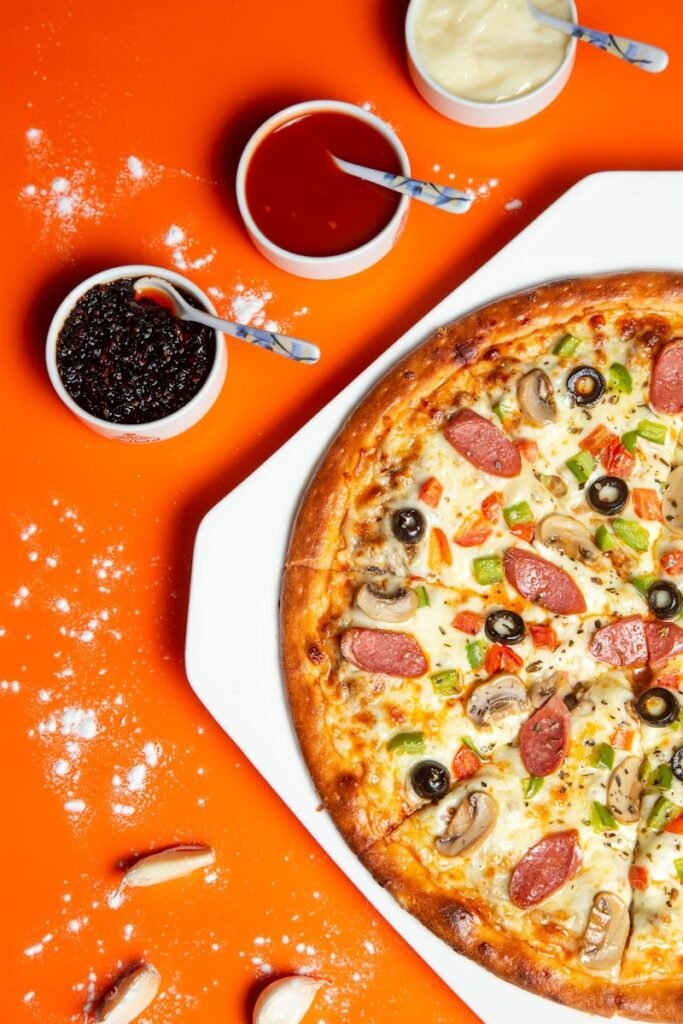
What Makes Pizza Dough Rise?
Have you ever pondered the mystical process by which a mere ball of pizza dough transforms into a heavenly, fluffy crust? Allow me, fellow aficionados of dough, to elucidate this enigma for you. Enter the tiny yet mighty force of fermentation yeast! In the wise words of Scott Wiener, “Yeast serves as the enchanting fairy godmother of pizza dough, converting ordinary ingredients into a regal feast for the palate.”
When yeast encounters the sugars within the dough, it initiates a raucous celebration, emitting carbon dioxide gas and alcohol as its exuberant companions. This gas becomes ensnared within the dough, causing it to inflate and ascend. Picture a pulsating disco within your pizza dough; bubbles emerge and swell, crafting that coveted ethereal texture. Thusly, when you witness your dough doubling in stature next time around, envision those minuscule yeasts diligently weaving their sorcery to bring forth your pizza fantasies to fruition.
The Role of Yeast in Dough Fermentation
Oh, the enigmatic realm of yeast and dough fermentation! Imagine this: a minuscule, seemingly unassuming ingredient causing a whirlwind of bubbling and expanding in your pizza crust. It’s as if a small culinary sorcerer is conjuring up a tempest of delectability. Yeast truly is the unsung champion of pizza creation, silently weaving its enchantment behind the curtain. In the words of esteemed chef Julia Child, “Yeast is alive, patiently awaiting the perfect conditions to assist dough in its rise towards that coveted flawless crust.
When you combine yeast with flour, water, and just a hint of sugar, you are essentially constructing a cozy abode for these microscopic beings. They feast on the sugar, emit carbon dioxide, and behold! Your dough begins to inflate like an exuberant balloon. It’s a straightforward scientific ballet that metamorphoses a flat mass into an ethereal masterpiece. As baker Chad Robertson sagely noted,”Yeast behaves like a wild creature. You cannot tame it, but you can create an environment where it thrives.” Therefore when you witness your dough swelling next time around remember to express gratitude to those diligent yeast cells for their unwavering commitment to the craft of pizza-making.n
Understanding Gluten and Its Importance in Pizza Dough
Imagine this: you sink your teeth into a delectable slice of pizza – the cheese oozes, the sauce zings, and the crust dances between crispy and chewy. Ever pondered what makes that crust so enchanting? Well, my fellow pizza enthusiasts, the secret lies within the enigmatic realm of gluten.
Gluten acts as the savior of pizza dough, providing it with structure and flexibility. When flour meets water and is kneaded vigorously, gluten fibers emerge to form a web that captures carbon dioxide generated during fermentation. This process causes the dough to expand and grants it that sought-after lightness we all yearn for. In the words of legendary chef Julia Child, “Life’s too short for self-loathing and celery sticks. So if you adore pizza, embrace the gluten and relish every morsel!”
So, next time you find yourself in awe of a flawlessly chewy yet crunchy pizza base, remember to pay homage to gluten. Though often maligned in certain dietary circles, this protein is truly an unsung hero in the universe of pizzas bringing delight to our palates. After all, isn’t that what pizza is ultimately about? Bringing folks together over a scrumptious feast while crafting memories that withstand time.n
How to Properly Knead Pizza Dough for Optimal Gluten Development
When delving into the realm of kneading pizza dough, one must understand that it is a delicate dance between flour and water; an art form, if you will, dear pizza aficionados! The goal is to achieve that elusive balance of chewiness and crispiness in your crust, a feat accomplished through the careful development of gluten during the kneading process. As the esteemed baker Peter Reinhart once mused, “Kneading develops the gluten, which is paramount for a stellar pizza crust.”
But here’s where things get tricky: over-kneading can be just as detrimental as under-kneading. We’re not looking to transform our dough into a solid mass; rather, we aim to coax it into a pliable, stretchy entity. As connoisseurs of pizza perfection, we acknowledge that the true magic lies in harmonizing flavors and textures. So as we immerse ourselves in the rhythmic act of kneading our dough, let us channel our inner pizzaiolo and heed Julia Child’s sage advice: “The only time to eat diet food is while you’re waiting for the pizza to arrive.” Let us handle our dough with tenderness and reverence, for it serves as the bedrock of every outstanding pizza creation.
Pizza isn’t merely a dish; it acts as an agent of unity that bridges gaps between individuals from diverse backgrounds, fostering moments of shared happiness that transcend cultural divides. Whether enjoyed during an ordinary weeknight meal or at an extravagant gathering, pizza possesses a unique ability to bring people together around one communal table where stories are swapped freely alongside laughter and slices laden with joy. And so as we diligently knead our dough with care and mindfulness, let us always keep in mind that beyond its culinary appeal lies its capacity to connect hearts and minds while crafting lasting memories together.
The Impact of Temperature on Dough Fermentation
Imagine this scenario: you find yourself on the brink of creating pizza dough from scratch because, let’s face it, you are a pizza connoisseur like no other. Now, let’s delve into the underappreciated hero of the pizza-making journey- temperature. That’s right, the degree of warmth or chill in your dough’s surroundings can truly be a game-changer when it comes to fermentation.
Temperature plays a vital role in regulating how swiftly yeast works its magic within the dough. If it veers towards being too cold, the yeast leisurely goes about producing its delightful bubbles. But introduce some heat into the equation and suddenly, the yeast springs into action saying, “Hold up! I need to kickstart my fermentation process pronto!” Just as culinary mastermind David Chang once remarked, “Yeast is a living organism with preferences just like any other living creature.” So provide that yeast with an ideal cozy spot to thrive in and witness your dough rise to perfection in all its splendid glory.
The Science Behind Proofing Pizza Dough
Proofing pizza dough may seem like a mere act of letting it rest and rise, but there’s a whole mysterious world behind it. When you allow your dough to proof, the yeast hidden within goes wild, unleashing carbon dioxide gas that creates those delightful bubbles in the crust. As the dough undergs this enigmatic process, it metamorphoses into a light and airy masterpiece that will surely tantalize your taste buds. In the words of chef Peter Reinhart, “Proofing is akin to performing a magical feat that transforms ordinary ingredients into something extraordinary.”
It may be tempting to hurry through the proofing stage with thoughts like, “I crave pizza now!” However, patience is truly a virtue here. The dough requires time to work its magic and develop all those mouthwatering flavors. Remember, great things come to those who wait especially in the realm of pizza. So, embrace the mystique of proofing and witness as your dough evolves into a splendid canvas for your preferred toppings. Keep in mind: “Rome wasn’t constructed in one day, but a flawless pizza can indeed be proofed in just one!”
Fermentation: The Secret to Flavorful Pizza Crust
Fermentation, the mysterious process that unlocks the perfect blend of chewiness and crunchiness in your pizza crust. As yeast feasts on sugars within the dough, they unleash carbon dioxide gas, causing the dough to expand and form those delightful air pockets that result in a fluffy and light crust. It’s as if a lively gathering is taking place within your dough, with yeast playing the role of cheerful guests who puff up the dough flawlessly.
But here’s where it gets interesting – fermentation isn’t just about expansion, it’s also about enhancing flavors. The longer you allow your dough to ferment, the more opportunity those yeast companions have to weave their magic and craft intricate flavors within the dough. As culinary icon Julia Child famously remarked, “It’s fermentation that gives that certain je ne sais quoi to the dough.” So be patient, let the dough rest and ferment, and witness how your pizza crust evolves into a flavorful work of art.
Pizza has an unparalleled ability to bring people together unlike any other dish. Whether it’s a laid-back Friday evening with friends or a festive occasion celebrating life’s small triumphs, pizza transcends mere sustenance and becomes a communal experience that binds us all. Therefore, when you savor a slice of pizza topped with exquisitely fermented crust next time around remember the enchantment of fermentation and its capacity for spreading joy at every table. Here’s to good food, pleasant company,
and relishing in simple pleasures like sharing a slice of pizza with loved ones by your side!
Achieving the Perfect Balance of Chewiness and Crispiness in Pizza Dough
Imagine the pursuit of achieving the flawless harmony between chewiness and crispiness in pizza dough, a quest that consumes any true pizza enthusiast. Envision taking a bite of a slice, witnessing the cheese stretch like an illusionist’s sleight of hand, while the crust offers just the right amount of crunch to send your taste buds into rhapsody. It is a subtle interplay between the texture of the dough and toppings that has the power to transform a mere pizza into an unforgettable culinary experience.
In the realm of pizzas, attaining this mystical equilibrium is akin to mastering an art form. As Julia Child famously remarked, “The ideal crust strikes a delicate balance between chewiness and crispiness.” It hinges on finding just the right blend of ingredients, precise kneading techniques, and even ensuring that oven temperature is spot-on. It is a voyage filled with experimentation and learning from mistakes; where dough rises to perfection and toppings provide that extra spark. Yet when you finally savor that flawless slice, it becomes a moment of sheer euphoria that validates all prior endeavors. So as you indulge in a slice amongst loved ones next time around, remember – pizza transcends being merely sustenance; it serves as an avenue for shared experiences uniting individuals through delectable means imaginable.
The Significance of Resting Pizza Dough Before Shaping
In the intricate dance of pizza-making, one might overlook the seemingly insignificant act of allowing dough to rest before shaping. However, believe me when I say that this unsung hero can determine the success or failure of your crust game. Giving your dough a moment to relax after kneading is crucial in coaxing those elusive gluten strands to unwind and mingle harmoniously. It’s akin to treating your dough to a luxurious spa day, ensuring its pliability and cooperation when it’s time for transformation.
As one wise pizza connoisseur aptly put it, resting the dough is like hitting pause on a chaotic party – providing an opportunity for everything to settle into perfect alignment. Picture a scenario where you bypass this vital step and attempt to mold unruly dough immediately; it’s akin to reasoning with a hungry toddler – an exercise in futility. So do yourself a favor and allow that dough some respite. You’ll thank me later when effortlessly crafting it into a luscious, airy crust straight out of dreams. Remember, patience yields rewards in the realm of pizza-making; granting your dough ample time ensures it will rise gloriously when called upon.n


